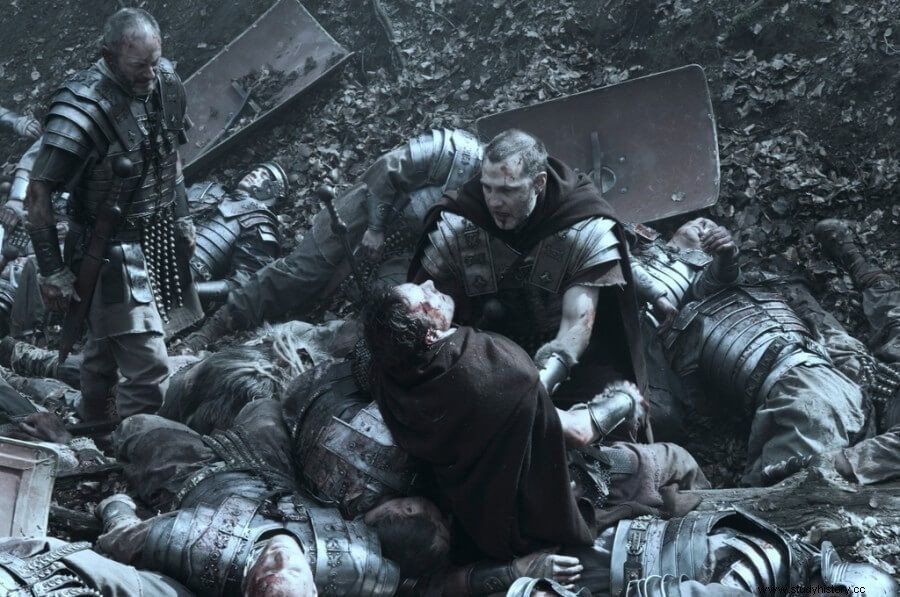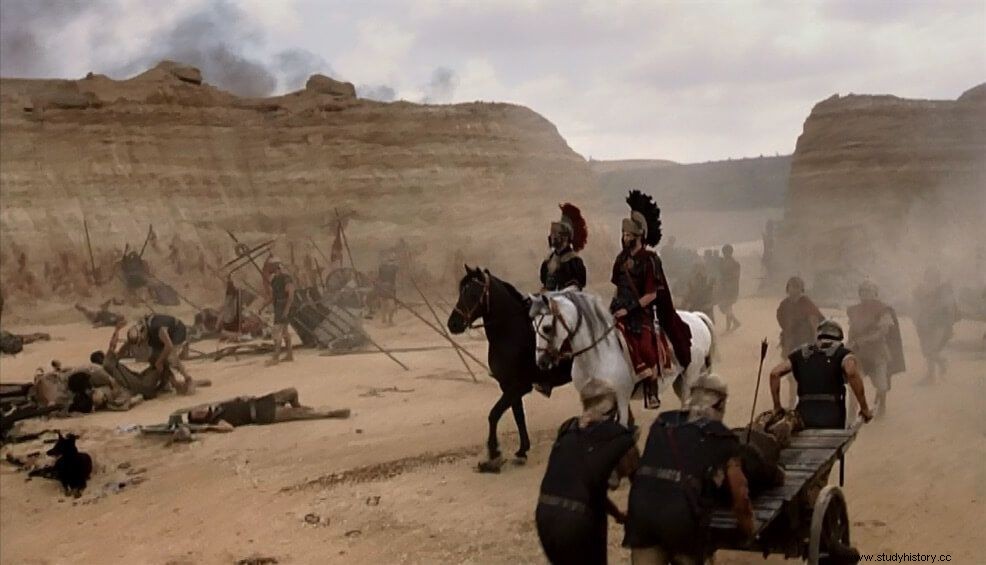
Those verses of the poet Antonio Colinas, fragments of the Canto X from his book Night beyond the night (1983), perfectly reflect the harshness of war and the horror of battle, in this case from the perspective of a Roman legionnaire. Visceral narratives of the soldier's experience in battle date back to the founding work of Western literature, the Iliad itself. (eg xiii, 540ff.; xiv, 383 et seq.). Many centuries separate Homer from nineteenth-century writers such as Stendhal and Tolstoy, but they would be both authors, in their respective novels La charterhouse of Parma (1839) and War and Peace (1869), the pioneers in approaching the narrative of personal experience in battle in its most chaotic and confusing aspect. Outside the literary field, in 1880, Estudios sobre la combat was published as a posthumous work. by the French colonel Ardant du Picq, some writings that tried to address the complex issue of the behavior of the soldier in battle, starting from combat in the ancient world. However, it would be the famous work of Sir John Keegan (1934-2012) The face of battle , published in 1976, which represented a radical change in military history in terms of how to approach the study of battle. Keegan turned away from tactical analysis and the vision of the high command and examined the physical conditions of combat, the particular emotions and behavior generated by battle, as well as the motives that drive soldiers to fight instead of flee. /P>

Academics in the Roman world, after the aforementioned verses by Antonio Colinas, would take almost another two decades to consider that the approach proposed by Keegan could –and should– be applied to the battles of ancient Rome, according to the limitations inherent in the sources. The pioneer was the British Adrian Goldsworthy who, with his book The Roman Army at War (1996), dismantled the traditional view of the dehumanized Roman soldier and automaton, totally disciplined and without initiative of its own. Since then, several experts have tried to shed light on the battle experience of the Roman legionnaire, paying attention not so much to the army as a perfect gear but to each individual combatant and to the most human aspects. In this sense, the last two decades have been prolific in terms of academic publications –Sabin, Zhmodikov, Daly, Quesada, Lendon and Anders, among others[2]– Certainly, when Goldsworthy studied the battles through the approach proposed by Keegan, the The idea of the automaton legionnaire was deeply rooted in traditional historiography. This tendency was even more pronounced in popular culture, mainly due to the flat and Manichean image transmitted by the cinematographic medium. Probably the best example of this vision of the Roman army as an incredibly modern, highly organized and totally disciplined force is the sequence of the final battle of Spartacus (1960), directed by Stanley Kubrick .
The face of the Roman battle in the movies
Keegan's ideas have arguably crossed the boundaries of academia. Of course, the face of the battle has had its echo in historical novels with ancient themes published in recent decades, as Fernando Quesada has duly demonstrated. For its part, since the 1980s and 1990s, a medium as popular as cinema has reflected the personal experience of the combatant and the bloodiest aspects of the battle. This trend towards realism, which in certain recent productions has turned towards hyper-realistic graphic violence, is a general aesthetic in film and television, as well as in other mass formats such as graphic novels and even more so video games. A trend in which Keegan's ideas have probably not had as much weight as the film and television conventions themselves and his aesthetic development.
Similarly, the influence of the experience of Vietnam and of more recent conflicts such as Iraq and Afghanistan cannot be ignored and what these have meant in the creation of a collective imaginary about the war experience – from real-time televised battle footage to post-traumatic stress disorder research. Saving Private Ryan (1998) was a turning point in this sense, and since then the representation of fear, chaos, viscerality and the subjective vision of the battle experience through the screen has been maintained until the most recent productions, such as the case of Dunkirk (2017).
Regarding the cinema set in ancient Rome, from the premiere of Gladiator in the year 2000 has shown a way of reflecting the battles focused on the personal experience of the combatant and also on the most visceral and brutal aspects of combat. David Franzoni, screenwriter and producer of the aforementioned film, defined it perfectly when he spoke about the sequence of the initial battle in Germania:
In this sense, the director Ridley Scott he acknowledged that they sought a recreation with certain references to the battlefields of the First World War, at the same time that they used cinematographic techniques similar to those of Spielberg in his frantic recreation of the landing on Omaha Beach.
Faced with the robotic and dehumanized image of Roman soldiers in classical cinema, we find more humanized representations of legionnaires in recent productions. A new approach to the representation of the Roman soldier that is evidenced mainly through the battles, using various techniques typical of cinematographic language that range from the dialogues to the use of CGI, through the camera approaches, the setting, the sounds of the combat and the use or absence of a soundtrack. Analyzing productions such as Roma (2005-2007), Centurion (2010), The Eagle Legion (2011) and the recent version of Ben-Hur (2016), a very visceral approach to the battle is observed and that affects the fears and the point of view of the legionnaire in battle. Evidencing this fact, I have established a series of relationships between that representation of war, the new prevailing trends in the Seventh Art and some of the approaches of the historiographic turn known as the "face of the battle".
One of the most significant examples of the aforementioned change in Roman cinema of the present century is seen in the film Centurion (2010). Quintus (Michael Fassbender), comments after the massacre of the Ninth Legion:

There are other interesting cinematographic examples that highlight the terrible consequences of a Roman battle, although in this case in a less dark and more ironic tone, as would be the case of the brief dialogue between Marco Antonio (James Purefoy) and Octavio (Simon Goods) after the battle of Philippi in the second season of the series Roma (2007):

As is evident, beyond the dialogues, the cinema, in this case the "Romans", has a whole series of visual resources to show different aspects of the face of the battle. In this sense, one of the opening scenes of The Eagle Legion is particularly suggestive. (2011). Through the repeated use of close-ups of the faces of the legionnaires, the uncertainty and fear of these Roman soldiers are emphasized, so humanized that we see how even one of them cannot contain the urge to vomit. Lined up at the gates of the camp and waiting to face a considerably larger group of Britons, their faces are the spitting image of the quote from the Roman author Tacitus that “in all battles the first to be vanquished are the eyes” ( germ . 43.5).
Notes
[1] I have addressed this issue in depth in an article entitled “Screening the Face of Roman Battle:Violence Through the Eyes of Soldiers in Film”, presented at the V International Congress Imagines:The Fear and the Fury:Ancient Violence in Modern Imagination (Turin, 2016) and which will be published this year in a collective monograph directed by the same IMAGINES project and edited by Bloomsbury.
[2] See also Pérez Rubio's contribution in Desperta Ferro Especial #VI:The Roman Legion (I), The Middle Republic
